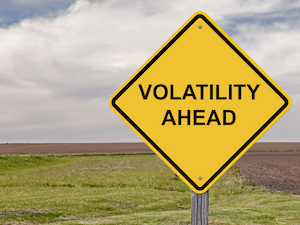 With volatility returning to Wall Street and political unrest throughout the world, 401(k) investors were busy traders in the first quarter of 2022.
With volatility returning to Wall Street and political unrest throughout the world, 401(k) investors were busy traders in the first quarter of 2022.
According to the Q1 2022 observations from Alight Solutions’ 401(k) Index, there were 16 above-normal trading days in the quarter—a stark contrast to the three above-normal days seen in all of 2021. In March alone, there were five above-normal trading days. The highest trading days generally occurred on days when stocks fell, Alight notes.
A “normal” level of relative transfer activity is when the net daily movement of participants’ balances as a percent of total 401(k) balances within the Index equals between 0.3 times and 1.5 times the average daily net activity of the preceding 12 months. A “high” relative transfer activity day is when the net daily movement exceeds two times the average daily net activity.
In addition, net transfers as a percentage of starting balances were 0.46%, nearly equal to the percentage seen in the prior 12 months (0.53%), with net trading activity significantly favoring fixed income. For the first quarter overall, 42 out of 62 trading days in the first quarter had net trading dollars moving from equities to fixed income. For March, 15 of 23 days favored fixed income funds, despite the market rally for the month.
Inflows and Outflows
Stable value funds saw the most trading inflows in the first quarter of 2022, receiving the lion’s share at 74% for an index value of $885 million, followed by money market funds (12% at $145 million) and bond funds (8% at $98 million).
Similarly, for the month of March, most trading inflows went to stable value funds at 80% for an index value of $181 million, while specialty/sector funds received 9% at $20 million and money market funds received 6% at $13 million.
Target date funds saw the most trading outflows during the first quarter at 44% for an index value of $532 million, followed by large U.S. equity funds (30% at $364 million) and company stock (8% at $93 million).
Asset classes with most contributions in March included target date funds, at 42% for an index value of $914 million, followed by large U.S. equity funds at 22% (or $482 million) and international equity funds at 8% (or $176 million).
After reflecting market movements and trading activity, average asset allocation in equities increased from 69.5% in February to 69.9% in March. New contributions to equities increased from 69.5% in February to 69.7% in March.
Market Performance
The 2022 year-to-date returns for common indices (as of the end of the first quarter) shows that U.S. bonds (represented by the Bloomberg U.S. Aggregate Bond Index) were down -5.93%; large U.S. equities (represented by the S&P 500 Index) were -4.6%; small U.S. equities (represented by the Russell 2000 Index) were -7.53%; and international equities (represented by the MSCI All Country World ex-U.S. Index) were -5.44%.

